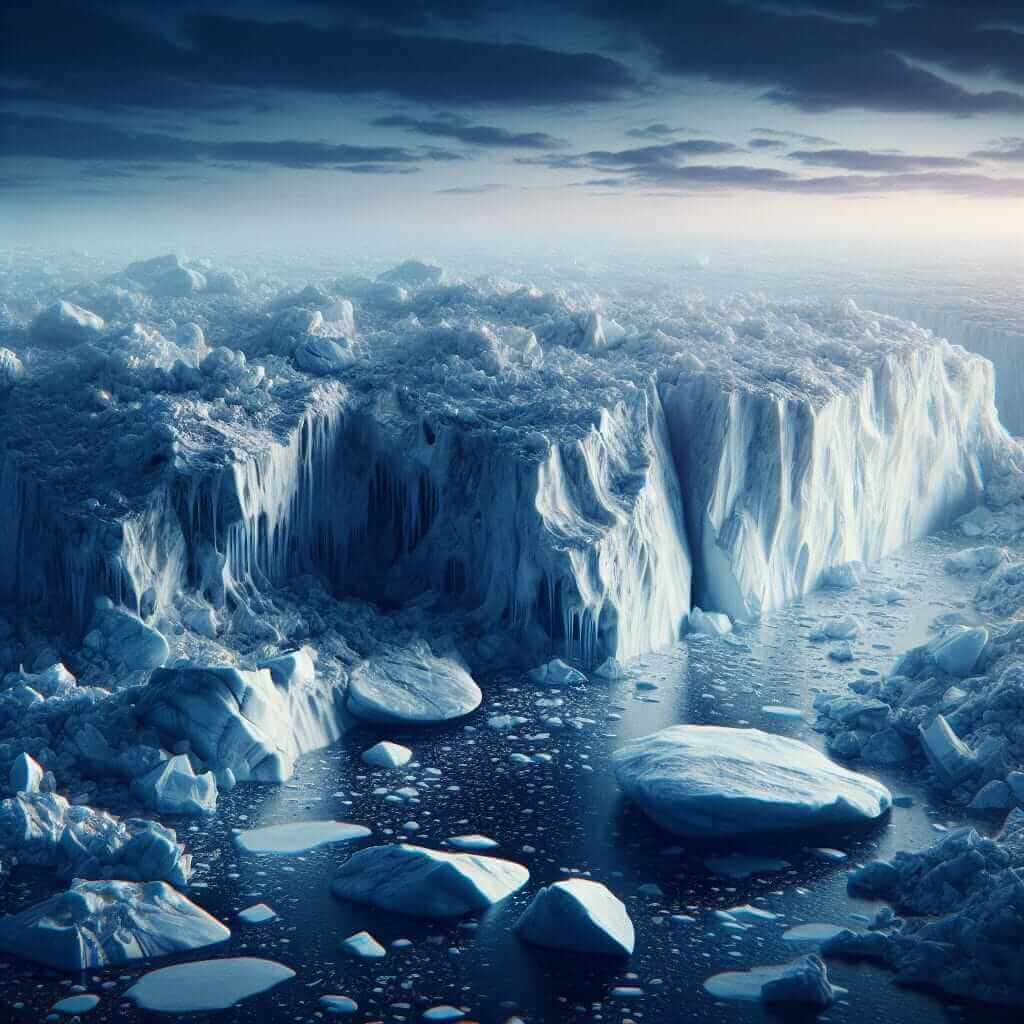The IELTS Reading section is designed to test a range of reading skills, including reading for gist, reading for main ideas, reading for detail, understanding inferences and implied meaning, recognizing a writer’s opinions, attitudes, and purpose, and following the development of an argument. The topic of climate change, particularly its impact on polar ice caps, is a relevant and frequently discussed subject that holds high potential for appearing in IELTS Reading passages due to its global importance.
In this article, we will delve into the topic “What are the effects of climate change on polar ice caps?” with an in-depth reading practice test. By doing so, we aim to provide a sample reading passage along with questions and detailed answers. This will help you better prepare for the IELTS Reading section, understand pertinent vocabulary and grammar, and apply effective test-taking strategies.
Reading Passage: Climate Change and Polar Ice Caps
Climate Change and its Impact on Polar Ice Caps
Over the past century, Earth’s climate has significantly altered due to human activities, primarily the burning of fossil fuels and deforestation. These actions increase the concentration of greenhouse gases, such as carbon dioxide (CO2) and methane (CH4), in the atmosphere. This phenomenon leads to global warming, which results in various environmental changes, one of the most notable being the melting of polar ice caps.
Polar ice caps, predominantly located in Greenland and Antarctica, play a crucial role in regulating Earth’s climate and sea levels. However, as global temperatures rise, these ice masses are melting at an unprecedented rate. This melting process has far-reaching implications for both the environment and human societies.
Rising Sea Levels
One of the most immediate effects of the melting ice caps is the rise in sea levels. As ice caps melt, they contribute to the volume of water in the oceans. Current estimates indicate that Greenland’s ice sheet contributes approximately 0.7 millimeters per year to sea-level rise. If the entire ice sheet were to melt, it could lead to a sea-level rise of about six meters. This rise in sea levels can have catastrophic effects on coastal regions, leading to increased flooding, erosion, and displacement of human populations.
Ecosystem Disruption
The melting of polar ice caps poses a significant threat to polar ecosystems. Species that depend on ice-covered environments, such as polar bears, seals, and penguins, face habitat loss. Polar bears, for instance, rely on sea ice to hunt seals, their primary food source. With reduced ice coverage, these animals struggle to find adequate food, which impacts their survival and reproduction rates. Furthermore, the introduction of freshwater from melting ice can disrupt ocean currents, affecting marine life and global climate patterns.
Permafrost Thawing
In addition to the melting of surface ice, climate change is causing the thawing of permafrost – a layer of permanently frozen soil found in polar regions. Permafrost acts as a carbon sink, storing vast amounts of organic carbon. When it thaws, the stored carbon is released into the atmosphere as CO2 and CH4, further exacerbating global warming. This positive feedback loop accelerates the process of climate change, leading to more severe and unpredictable weather patterns.
Global Implications
The effects of climate change on polar ice caps are not confined to the polar regions alone but have global ramifications. Changes in polar ice dynamics can influence global ocean circulation patterns, known as thermohaline circulation, which regulate climate by distributing heat across the planet. Disruptions to these circulation patterns can lead to more extreme weather events, such as hurricanes and heatwaves, affecting millions of people worldwide.
The International Community’s Response
Addressing the melting of polar ice caps requires a concerted global effort. International agreements, such as the Paris Agreement, aim to limit global warming to below 2 degrees Celsius. Mitigation strategies include reducing greenhouse gas emissions, transitioning to renewable energy sources, and protecting natural carbon sinks like forests and wetlands. Additionally, adaptation measures are necessary to safeguard vulnerable communities from the adverse effects of sea-level rise and ecosystem disruptions.
 Melting Polar Ice Caps
Melting Polar Ice Caps
Reading Questions
Questions (10 Total)
Questions 1-3: Choose NO MORE THAN THREE WORDS from the passage for each answer.
- What human activities are primarily responsible for the increase in greenhouse gases?
- Which two polar regions are predominantly covered by ice caps?
- What type of bear relies on sea ice to hunt seals?
Questions 4-6: Complete the sentences below. Use NO MORE THAN TWO WORDS from the passage for each answer.
- Melting ice caps contribute to _____ in sea levels.
- Freshwater from melting ice can disrupt _____.
- The thawing of permafrost releases and into the atmosphere.
Questions 7-10: Do the following statements agree with the information given in the passage? Write:
- TRUE if the statement agrees with the information
- FALSE if the statement contradicts the information
- NOT GIVEN if there is no information on this
- The melting of Greenland’s ice sheet currently contributes approximately one millimeter per year to sea-level rise.
- Polar bears have adapted well to the loss of sea ice and are thriving in their new environment.
- Thawing permafrost releases carbon into the atmosphere, exacerbating global warming.
- International efforts to address climate change include strategies to protect natural carbon sinks.
Answer Key and Explanations
Answers
-
burning fossil fuels (The text states that human activities, primarily the burning of fossil fuels and deforestation, are responsible for increasing greenhouse gases.)
-
Greenland, Antarctica (The passage mentions that polar ice caps are predominantly located in Greenland and Antarctica.)
-
polar bear (Polar bears rely on sea ice to hunt seals, as noted in the passage.)
-
rise (Melting ice caps contribute to a rise in sea levels.)
-
ocean currents (The introduction of freshwater from melting ice can disrupt ocean currents.)
-
carbon, methane (When permafrost thaws, it releases stored carbon and methane into the atmosphere.)
-
FALSE (The passage states that Greenland’s ice sheet contributes approximately 0.7 millimeters, not one millimeter, per year to sea-level rise.)
-
FALSE (The text mentions polar bears struggle to find adequate food with reduced ice coverage, suggesting they are not thriving.)
-
TRUE (The passage states that thawing permafrost releases carbon, further exacerbating global warming.)
-
TRUE (Mitigation strategies include protecting natural carbon sinks like forests and wetlands, as mentioned in the passage.)
Common Mistakes and Tips
- Understanding Key Details: Many candidates lose marks by missing key details in the text. For instance, the exact contribution of Greenland’s ice sheet to sea-level rise (0.7 millimeters) was crucial.
- Accurate Information: Ensure answers are based on accurate information from the passage, not assumptions or general knowledge.
- Paraphrasing Proficiency: Practicing paraphrasing is essential as IELTS often tests understanding through different wording.
- Grammar and Expression: Answers should be a correct form of grammar and expression as required by the prompt.
Vocabulary
- Greenhouse gases (noun) /ˈɡriːnˌhaʊs ˌɡæsɪz/: Gases that trap heat in the atmosphere.
- Deforestation (noun) /ˌdiː.fəˈrɛ.stəɪ.ʃən/: The action or process of clearing forests.
- Permafrost (noun) /ˈpɜːr.məˌfrɒst/: Ground that remains completely frozen for years.
- Mitigation (noun) /ˌmɪtˈɡeɪ.ʃən/: The action of reducing the severity of something.
Grammar
Passive Voice
Structure: [object] + [be] + past participle (by [subject])
Example: “The ice caps are melted by rising global temperatures.”
Relative Clauses
Structure: [main clause], [relative pronoun] + [clause]
Example: “Polar bears, which rely on sea ice, are struggling to hunt.”
Conclusion
Achieving a high score in the IELTS Reading section requires a blend of practice, understanding vocabulary, and applying effective test-taking strategies. By working through passages on current and significant topics like “The effects of climate change on polar ice caps,” candidates can better prepare themselves. For further reading practice and resources, consider exploring [The Impact of Global Warming on Polar Ice Caps]. Remember to read broadly, practice different question types, and hone your comprehension skills.
With dedication and effective preparation, success in the IELTS Reading section is within your reach!


